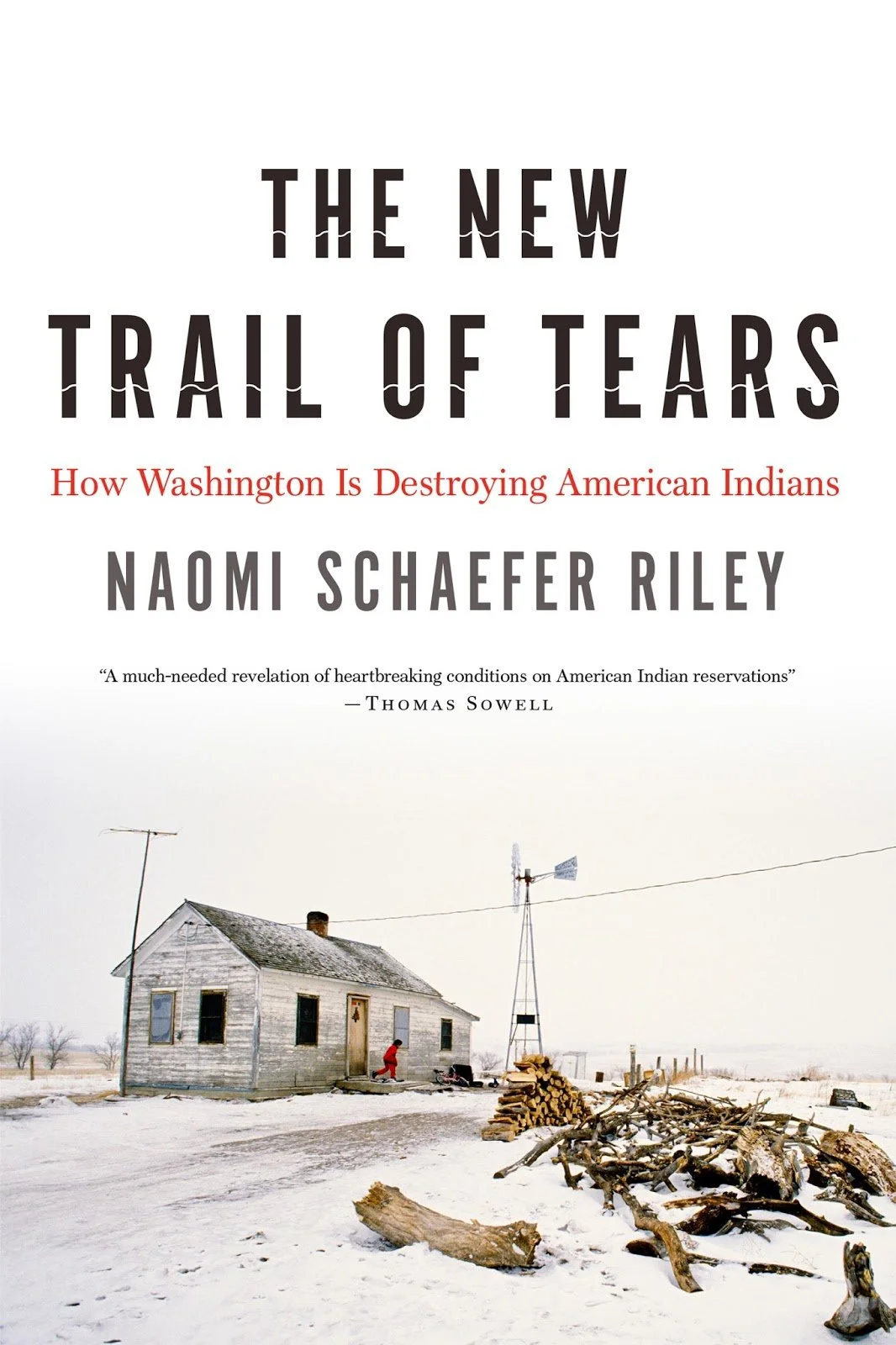Review: The New Trail of Tears: How Washington is Destroying American Indians, By: Naomi Schaefer Riley
THREE QUOTES:
“In the past two years, I’ve travelled to Indian communities around the United States and Canada. I’ve interviewed tribal leaders, economists, educators, business people, and government officials, all in an effort to understand what ails American Indians, particularly those on reservations. The results are by no means a comprehensive history of American Indians or even a complete picture of American Indians today. There are 562 federally recognized Indian nations in the United States - about half of which are in Alaska - and 310 reservations. Any book about American Indians will have to make some generalizations. And for that I apologize in advance. But the fact that these groups have different cultural traditions, different treaties, and different economic, political, and social situations doesn’t mean they have nothing in common.”
“As you’ll see in this book, the problems American Indians face today — lack of economic opportunity, lack of education, and lack of equal protection under the law — and the solutions to these problems require a different approach from the misguided paternalism of the past 150 years. It’s not the history of forced assimilation, war, and mass murder that have left American Indians in a deplorable state its the federal government’s policies today.”
“If you compare Indian communities to other impoverished areas in the United States, you’ll see similarities in terms of single motherhood, teen pregnancy, drug use, and violence. Indeed, Morris believes the core of the problem is ‘family disintegration,’ caused largely, she says, by government subsidies… ‘It didn’t matter if he took off for three months on a binge. They had HUD housing, they had food stamps, fuel assistance, tribal health care, he wasn’t needed. If he thought his family wouldn’t have had food, he would have behaved differently. A man does need to feel needed. But the government took care of all that.'"
TWO TAKEAWAYS
Four domains are affected: health services, social services, policing, and education — there is often confusion about who is responsible for different needs in the community and there are unclear expectations of different levels of government or tribal leadership. Riley explains there is a lack of policing in many reserves due to the confusion between the reserve and the federal government. In education, there is often an expectation for the federal government to take the lead, but it really comes down to tribal/community-based leadership. And for social services, the Indian Child Welfare Act can interrupt the proper care of children.
The observations and stories shared in the book hit home for us — it felt like many of them were describing our community and the roadblocks we experienced as educators. While there is comfort in knowing we aren’t alone, it angers me that we aren’t alone. The youth and families in these communities are often slipping through the cracks. It is like Riley explains in the book, the heart-breaking conditions in these communities are one of America’s best-kept secrets.
ONE NEXT STEP:
I want to graciously share with those who never get to see ‘the north’ up close and personal. There is a disconnect between southerners (the endearing term used for Canadians who live in the southern provinces) and indigenous communities. There is even a disconnect between Josh and I and some of the harsh realities faced by our neighbours behind their closed doors. It almost feels like we are on a hamster wheel with the media and government spinning us around and around — sharing select stories from the North and proposing solutions to the ‘problem.’
The heart-breaking reality we see every day needs to be shared.
I know there is no easy fix, but I do know that salvation is available to anyone who accepts Jesus Christ as their saviour and commits their life to following Him. And I know our ultimate hope is in Christ. I also know that many policies in place are false hope and give the illusion that much help is being offered to Indigenous people, when in reality they are not.
If you read the book and have any questions, I would love to connect. If you think of others who should read this book, please share it.
Rebecca
